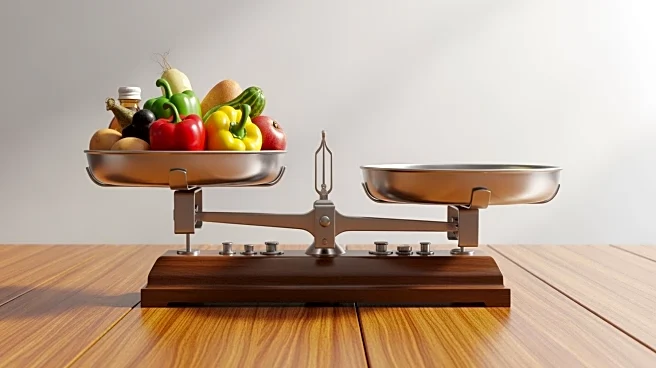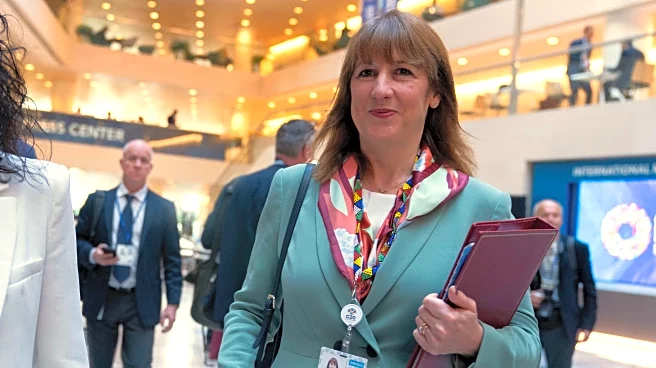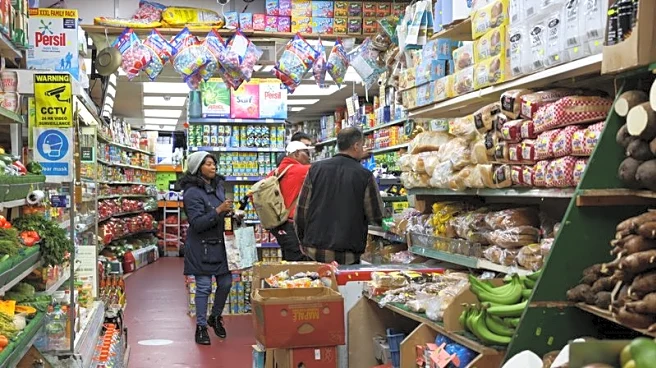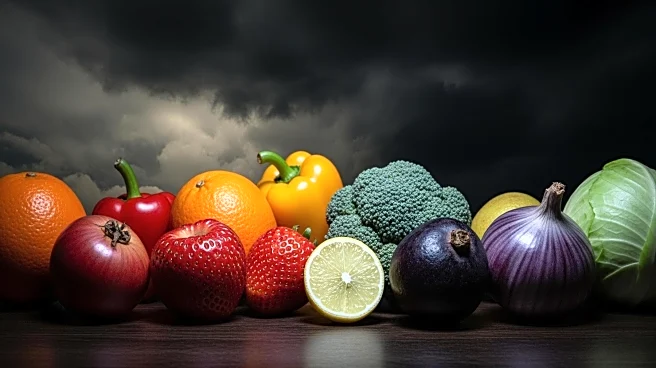What's Happening?
The UK inflation rate has remained steady at 3.8% for the third consecutive month, according to recent reports. This stability in inflation is reflected in the grocery sector, where prices for food and
non-alcoholic drinks have seen a slower increase, with a rate of 5.1% in the year to August. Despite the slight dip in food price inflation to 4.5%, the cost of groceries continues to be a concern for consumers. The Office for National Statistics tracks the prices of various items, including supermarket goods, fuel, and home furnishings, indicating a broad impact on consumer expenses. Economists are closely monitoring these figures as they could influence the Bank of England's interest rate decisions, with potential cuts anticipated in the near future.
Why It's Important?
The steady inflation rate and its impact on grocery prices are significant for both consumers and policymakers. For consumers, the slower rise in food prices offers a slight relief, although costs remain high. For policymakers, particularly the Bank of England, these figures are crucial as they consider adjustments to interest rates. A stable inflation rate above the target could lead to interest rate cuts, aiming to stimulate economic activity. This situation also affects the Chancellor's budget planning, as easing inflationary pressures might provide more flexibility in fiscal policy decisions.
What's Next?
The Bank of England is expected to review these inflation figures in its upcoming meeting on November 6, where interest rate decisions will be a key focus. Economists and policymakers will be watching closely to see if the trend of easing inflation continues, which could lead to further interest rate cuts. Additionally, the Chancellor will be considering these economic indicators as she finalizes plans for the upcoming budget, potentially adjusting fiscal strategies to accommodate the current economic climate.













